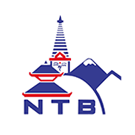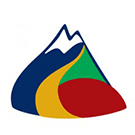Communication facilities during the trek can vary widely. While mobile phone services are available throughout Nepal, including at Everest Base Camp, the quality of reception differs by location. The main communication technologies used on the trails are NTC and Ncell SIM cards, though their coverage is inconsistent. Some trails may have no service, while popular routes often provide Wi-Fi. To ensure reliable contact when necessary, the Nepal Sanctuary Treks team carries a satellite phone or portable communication device.
Archives: FAQ
What cultural considerations and etiquettes should I keep in mind while trekking?
Trekking etiquette in Nepal emphasizes the importance of responsible tourism: when trekking, practice respect for local culture by dressing modestly and asking permission before taking photos. Leave no trace, stick to marked trails, and adhere to local guidelines. Greet others with “Namaste,” acclimatize properly, and stay hydrated. Support the local economy by purchasing local goods. Enjoy your trek while making a positive difference in the communities you visit! For more information please refer to Responsible Travel
What should I pack for the Makalu Base Camp trek?
Essentials:
- All-season sleeping bag
- Down jacket
- Windproof and waterproof jacket
- Daypack
- Sunglasses
Upper Body:
- Half gloves
- Warm hat
- Sunscreen (35 to 60 SPF)
- Headlamp with extra batteries
Hands:
- Gloves for walking poles (optional)
- Warmer shell gloves and liner
Lower Body:
- Thermal underwear
- Windproof and waterproof trousers
- Warmer trousers
- Comfortable trekking pants
Footwear:
- Waterproof trekking boots
- Sandals
- Woolen socks (4-5 pairs)
- Sock liners
- Light shoes or sneakers
- Gaiters
First Aid and Medicines:
- Adhesive bandages
- Blister treatment cream
- Insect/anti-itch ointment
- Ibuprofen or pain-relief medication
- Diamox (altitude sickness medication)
- First aid supplies (wraps, splints, butterfly bandages)
- Water purifying pills
Miscellaneous:
- Passport
- Travel permits
- Insurance certificate
- Vaccination card
- Refillable water bottle with filter
- Flight details
- Bathroom kit (toilet paper, plastic bags, hand wipes, nail cutter, towel, soap)
- Personal medicine
Extras:
- Trekking poles
- Quality energy dry foods
- Power bank
Camera with memory card, chargers, and extra batteries
What is the altitude of Makalu Base Camp?
Makalu Base Camp is at an elevation of around 4,800 meters (15,750 feet).
What permits do I need for Makalu Base Camp trek?
You need a Makalu-Barun National Park permit and a TIMS (Trekkers’ Information Management System) card. Nepal Sanctuary Treks can arrange the permit for you. For more details, please contact us at info@nepalsanctuarytreks.com.
How challenging is the trek to Makalu Base Camp?
The trek is considered challenging, as it involves steep ascents, descents, and high-altitude terrain. It’s recommended for experienced trekkers.
When is the ideal time to visit Makalu Base Camp?
The best time is during the pre-monsoon (spring) and post-monsoon (autumn) seasons, which are generally in April-May and October-November. During these times, you will experience the nice weather, with clear skies and mild temperatures, which makes trekking both more pleasant and safer.
How do I get to Makalu Base Camp?
The typical route is to fly to Tumlingtar and then trek to Makalu Base Camp. The trek usually takes about 18-20 days.
Where is Makalu Base Camp located?
Makalu Base Camp is situated in the Makalu Barun National Park in the Himalayas, in Nepal.
Do teahouses provide hot boiled water during the Kanchenjunga Circuit Trek?
Yes, teahouses offer hot boiled water for an additional fee, typically ranging from USD 2 to 5 per liter. The cost may vary and tends to increase at higher altitudes.
Is it possible to charge electronic equipment during the Kanchenjunga Circuit Trek?
You can charge your device during trek for an additional cost, usually around USD 1-5 per charge. It’s highly recommended to bring or purchase two-pin (type C) and three-pin (type D) adapters in Kathmandu.
How do Nepal Sanctuary Treks guides keep clients safe during treks?
Monitoring Health: Guides use oximeters to check clients’ oxygen levels daily, carry a first aid kit, and utilize the Lake Louise Form to monitor altitude sickness.
Communication: They are equipped with local SIM cards and satellite phones for continuous updates.
Emergency Response: In emergencies, they promptly notify the Kathmandu office and CIWEC clinic and are prepared to arrange critical support, including helicopter evacuations for severe medical issues.
What safety measures are crucial before starting a Kanchenjunga trek?
Before starting a Kanchenjunga trek, consider these crucial tips and safety precautions:
- Acclimatization: Gradually acclimate to higher altitudes, avoiding rapid ascents.
- Physical Fitness: Ensure good physical condition through regular exercises and training, as Kanchenjunga trekking is demanding.
- Weather Awareness: Himalayan weather is unpredictable; Nepal Sanctuary Treks team check forecasts and prepare for changes.
- Altitude Sickness: Stay hydrated, rest, and avoid alcohol/smoking to prevent altitude sickness. Nepal Sanctuary Treks plans itineraries with ample rest days to aid in acclimatization.
- Hygiene: Maintain good hygiene with hand sanitizer and wet wipes.
- Equipment: Have essential trekking gear: poles, hiking boots, warm clothing, sleeping bag, and backpack.
- Insurance: Obtain proper trekking insurance covering emergency evacuation and medical expenses.
What kind of weather variation should trekkers expect in the Kanchenjunga region?
The weather in Kanchenjunga can change unexpectedly. It’s important to be ready for that, no matter the season. Here’s a look at what weather you might experience throughout the year:
| Month | Temperature (°C) | Precipitation (mm) | Weather Conditions |
| January | -5 to 7 | 30 to 50 | Cold and dry |
| February | -3 to 9 | 30 to 50 | Cold and dry |
| March | 2 to 13 | 50 to 100 | Mild and dry |
| April | 6 to 16 | 100 to 150 | Mild and dry |
| May | 9 to 18 | 150 to 200 | Warm and dry |
| June | 11 to 20 | 200 to 250 | Warm and wet (monsoon season) |
| July | 12 to 20 | 300 to 350 | Warm and wet (monsoon season) |
| August | 12 to 20 | 300 to 350 | Warm and wet (monsoon season) |
| September | 11 to 19 | 200 to 250 | Mild and wet (monsoon season) |
| October | 6 to 16 | 150 to 200 | Mild and dry |
| November | 1 to 11 | 50 to 100 | Cold and dry |
| December | -3 to 8 | 30 to 50 | Cold and dry |
Note that temperatures and rainfall can vary based on the location and elevation in the Kanchenjunga region. Check the weather forecast before trekking and pack accordingly.
How are the tea houses on the Kanchenjunga Circuit trek?
The tea houses along the trek are generally basic and don’t offer luxury amenities. Wi-Fi is available in only a few tea houses. Showers are typically bucket showers, and squat toilets are commonly used.








